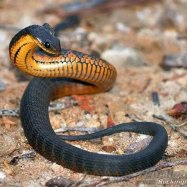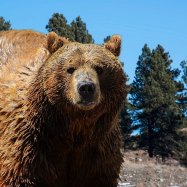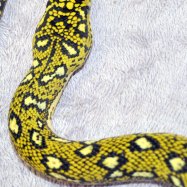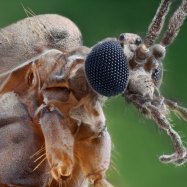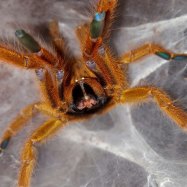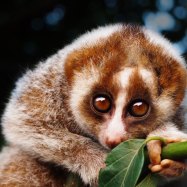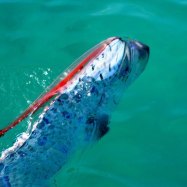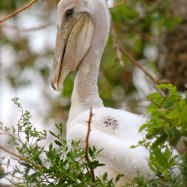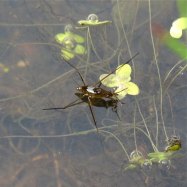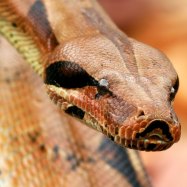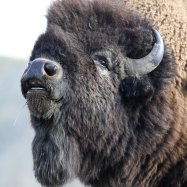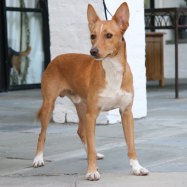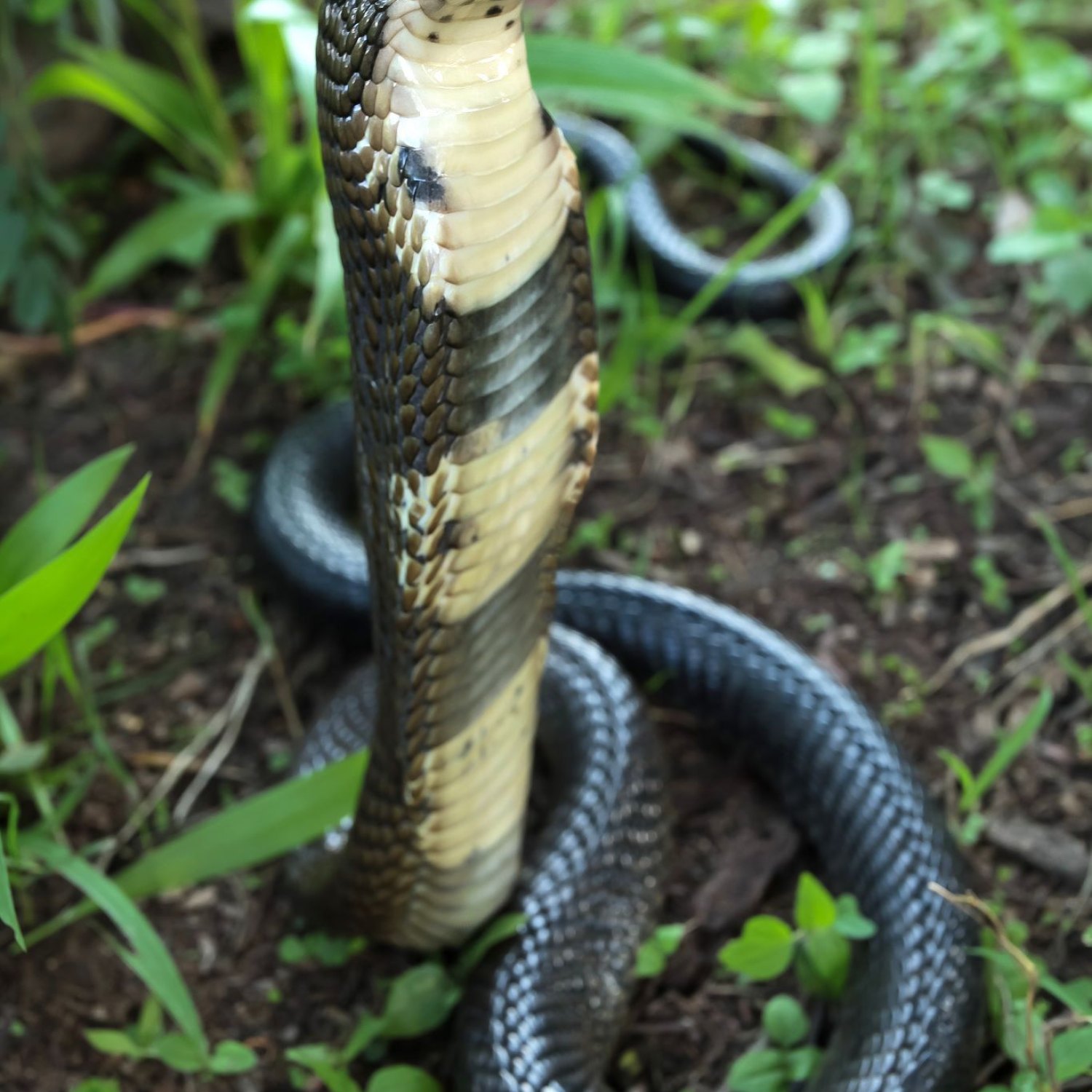
King Cobra
3.18 to 4.87 meters (10.4 to 16 feet)
The King Cobra, also known as the Ophiophagus hannah, is one of the most fascinating and feared snakes in the animal kingdom. They can grow up to 16 feet long and are mainly found in India and Southeast Asia. Their sleek and slender body shape, along with their deadly venom, make them a formidable predator. Learn more about this impressive creature and its Elapidae family. #KingCobra #Ophiophagushannah #Elapidae #snake #India #SoutheastAsia
Animal Details Summary:
Common Name: King Cobra
Kingdom: Animalia
Habitat: Forests, grasslands, and swamps
King Cobra: The Majestic Serpent of Southeast Asia
The mention of a cobra can spark both fear and awe in individuals. These venomous snakes have been portrayed in different cultures as both a symbol of death and protection. And at the top of the cobra family sits the King Cobra, the largest venomous snake in the world. In this article, we will dive into the fascinating world of King Cobras, learning about their habitat, feeding habits, geographical distribution, and more King Cobra.The Scientific Name and Classification of King Cobras
The King Cobra's scientific name is Ophiophagus hannah, which translates to "snake-eater" in Greek. This name is highly appropriate as the King Cobra is known to feed on other snakes, including its own kind.As for its classification, the King Cobra belongs to the kingdom Animalia, phylum Chordata, class Reptilia, and order Squamata. It is a member of the Elapidae family, which also includes other venomous snakes such as the black mamba and the taipan.
Habitat and Geographic Distribution
The King Cobra can be found in forests, grasslands, and swamps across Southeast Asia, mainly in the countries of India, China, Indonesia, and other parts of Southeast Asia. It is most commonly found in India and Southeast Asia, where it can thrive in various habitats, from dense jungles to urban areas.Unlike most snakes, the King Cobra is not bound by a specific habitat or climate. It can adapt to a variety of environments, making them a versatile species.
A Carnivorous Diet
The King Cobra is a carnivorous species, mainly feeding on other snakes, lizards, and small mammals Kirtlands Snake. Despite its impressive size, it is capable of hunting and consuming prey that is almost as large as itself. Its preferred method of hunting is by biting and injecting venom into its prey, which quickly immobilizes and kills its victims.Interestingly, while most snakes swallow their prey whole, King Cobras have been observed to dislocate their jaws to swallow prey that is larger than their head. This ability allows them to consume larger meals and go longer periods without feeding.
A Closer Look at the Physical Characteristics of King Cobras
The King Cobra is an impressive sight, with its sleek and slender body shape, which gives it a majestic appearance. These snakes can grow up to a length of 4.87 meters (16 feet), with the largest recorded specimen reaching up to 5.85 meters (19.2 feet). They are the longest venomous snakes in the world, and their length, coupled with their striking coloration, makes them an easily recognizable species.King Cobras are typically olive to brown in color, with pale yellow or white bands running along their body. These bands help camouflage them in their natural habitat, making it easier to hunt their prey.
The Threat of Human Interference
While King Cobras tend to avoid human interaction, they are still in danger due to human activities. Habitat destruction, poaching, and the illegal pet trade have been significant threats to the survival of this species. As human activities continue to encroach into their habitats, King Cobras are facing a decline in their numbers.Another threat to their survival is the persecution and killing of these snakes due to fear and misconception. King Cobras are not naturally aggressive towards humans and will only attack if threatened or cornered. However, their venom is potent, and a bite from a King Cobra can be fatal if left untreated.
The Role of King Cobras in Their Ecosystem
Despite their reputation as deadly creatures, King Cobras play a vital role in maintaining the balance of their ecosystem. As top predators, they help control the population of small mammals and other snakes, ensuring that their prey does not become overpopulated.In some cultures, the King Cobra is highly revered and considered a symbol of protection and good luck. This perception has helped in the conservation of this species, as many communities have developed a great respect for King Cobras and their role in the ecosystem.
The Importance of Conservation Efforts
King Cobras are currently listed as a vulnerable species on the International Union for Conservation of Nature (IUCN) Red List. This signifies that they are at a high risk of extinction if conservation efforts are not implemented.Conservation efforts are crucial in ensuring that these majestic creatures continue to exist for generations to come. Raising awareness about the importance of King Cobras in their ecosystem and implementing strict laws against poaching and the illegal pet trade are vital steps towards their conservation.
In Conclusion
The King Cobra is truly a remarkable species, with its impressive size, striking coloration, and important role in the ecosystem. While they may instill fear in many, these snakes are an essential part of our natural world and deserve our respect and protection. Through conservation efforts and a deeper understanding of these majestic creatures, we can ensure that they continue to thrive in their natural habitat.

King Cobra
Animal Details King Cobra - Scientific Name: Ophiophagus hannah
- Category: Animals K
- Scientific Name: Ophiophagus hannah
- Common Name: King Cobra
- Kingdom: Animalia
- Phylum: Chordata
- Class: Reptilia
- Order: Squamata
- Family: Elapidae
- Habitat: Forests, grasslands, and swamps
- Feeding Method: Carnivorous
- Geographical Distribution: Southeast Asia
- Country of Origin: India, China, Southeast Asia, Indonesia
- Location: Mainly found in India and Southeast Asia
- Animal Coloration: Olive to brown color with pale yellow or white bands
- Body Shape: Sleek and slender
- Length: 3.18 to 4.87 meters (10.4 to 16 feet)
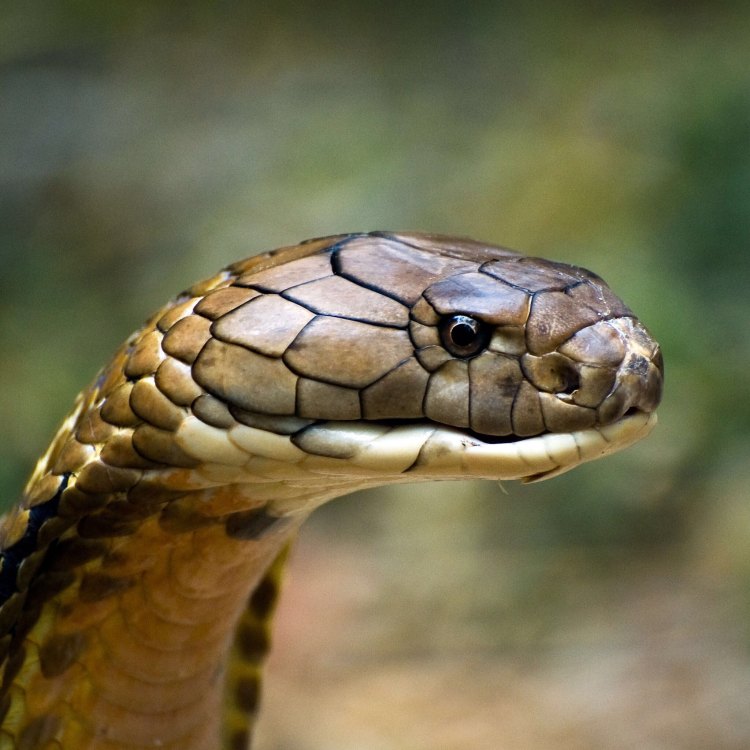
King Cobra
- Adult Size: Large
- Average Lifespan: 20 years in the wild
- Reproduction: Sexual
- Reproductive Behavior: Mate during the spring season
- Sound or Call: Hissing and growling sounds
- Migration Pattern: Non-migratory
- Social Groups: Solitary, except during mating season
- Behavior: Highly aggressive when threatened
- Threats: Habitat loss, illegal wildlife trade, snake charmers
- Conservation Status: Vulnerable
- Impact on Ecosystem: Top predator, helps control rodent populations
- Human Use: Snake charming, traditional medicine
- Distinctive Features: Hooded neck and long fangs
- Interesting Facts: Longest venomous snake in the world, can raise up to one-third of its body off the ground
- Predator: Humans and other large predators
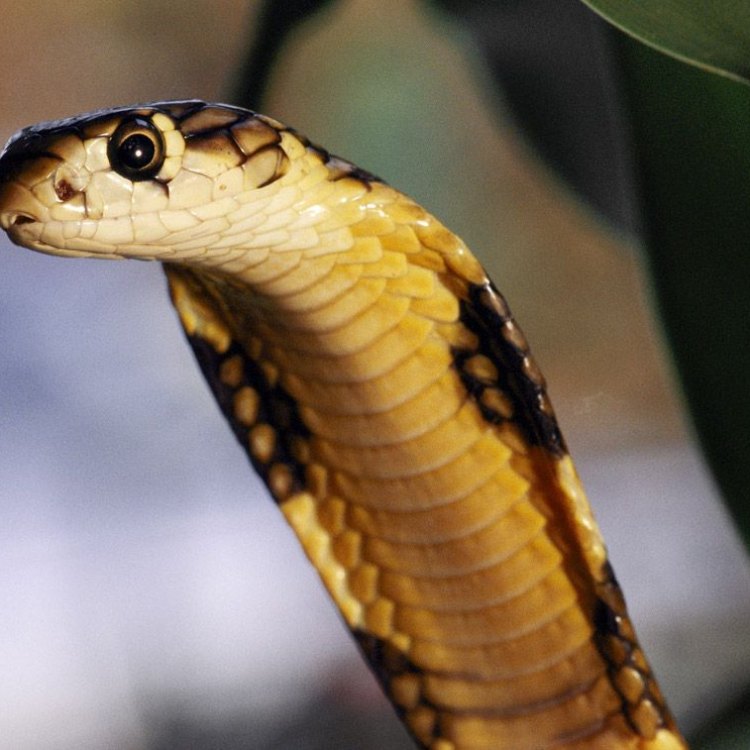
Ophiophagus hannah
The Mighty King Cobra: Top Predator and Threatened Species of the Wild
The serpentine creature glides effortlessly through the dense vegetation, its gleaming scales glistening under the sun. As it stretches up to one-third of its body, revealing its iconic hooded neck and long fangs, one cannot deny the awe and fear that the King Cobra evokes. This magnificent and deadly creature is the longest venomous snake in the world and a top predator in its ecosystem. But despite its formidable reputation, it is also a threatened species, facing numerous threats in the wild PeaceOfAnimals.Com. Let's delve deeper into the fascinating world of the King Cobra and uncover the unique features that make it stand out among other snake species.Size and Lifespan
The King Cobra, scientifically known as Ophiophagus hannah, is a large snake species that can reach an average length of 3 to 4 meters and can weigh up to 6 kilograms. However, there have been reports of King Cobras measuring up to 5.85 meters, making them one of the longest snakes in the world.
In terms of lifespan, King Cobras have an average lifespan of 20 years in the wild. However, in captivity, they can live up to 30 years. This makes them long-lived creatures compared to other snake species, which have an average lifespan of 10-15 years.
Reproduction and Behavior
The King Cobra is a sexual species, with males competing for a female's attention during the spring season. Mating behavior can be observed in the form of intricate dances between the male and female, in which they intertwine their bodies and lift their heads off the ground Killifish. Once the female is ready to mate, she releases pheromones, signaling to the male that she is receptive.
After mating, the female lays up to 20-40 eggs, which she guards fiercely until they hatch after 60-70 days. King Cobras are known to be devoted parents, and they stay with their eggs until they hatch, providing protection and warmth by coiling around them.
Sounds and Calls
One of the distinctive features of the King Cobra is its hissing and growling sounds. These sounds are produced by expelling air forcibly through its throat, and it can be heard up to a distance of 100 meters. The purpose of these vocalizations is to warn and intimidate potential threats, including other animals and humans.
The King Cobra also makes a hissing sound by rubbing its scales together, which is referred to as "stridulation." This sound is used during mating rituals to attract females and to establish dominance among other male King Cobras.
Migration and Social Groups
Unlike other snake species, King Cobras are non-migratory, meaning they do not travel long distances in search of food or better habitat. They are typically solitary creatures, only coming together during the breeding season. However, sometimes, groups of King Cobras can be seen basking together to soak up the sun.
The female King Cobra also forms a social group with her offspring until they are old enough to fend for themselves. This bonding between the mother and her hatchlings is a rare trait among snake species.
Aggression and Threats
King Cobras are known to be highly aggressive when threatened. They have a potent venom that is highly toxic to their prey and can also cause severe harm to humans. When provoked, they can strike and inject large amounts of venom into their prey.
Unfortunately, this aggressive behavior has also made them a target for humans. The King Cobra's presence near human settlements can result in conflict, leading to their death. Additionally, they are also hunted for their skin, which is used to make traditional medicine, and their fangs, which are sold in the illegal wildlife trade.
Conservation Status and Impact on Ecosystem
Due to these threats, the King Cobra is listed as a vulnerable species on the International Union for Conservation of Nature's Red List. Their habitat has been severely affected by deforestation and urbanization, resulting in a significant decline in their population.
As top predators, King Cobras play a crucial role in maintaining the balance of their ecosystem. They help control rodent populations, which can cause damage to crops and spread diseases. Their presence is also an indicator of a healthy ecosystem.
Human Use and Distinctive Features
The King Cobra has been a subject of fascination and fear for centuries, and human use of these creatures goes back a long way. In some cultures, snake charmers use King Cobras for entertainment, which involves playing flutes to make the snakes "dance." This practice not only causes severe stress to the snakes but also endangers the performers' lives, as King Cobras are unpredictable creatures.
The distinctive features of King Cobras, such as their hooded neck and long fangs, have also contributed to their use in traditional medicine. Their skin is believed to have healing powers, and their fangs are used in different ancient remedies. However, there is no scientific evidence to support these claims, and the use of King Cobras in traditional medicine contributes to their decline in the wild.
Interesting Facts and Predators
Apart from its iconic features and unique behaviors, there are many interesting and lesser-known facts about the King Cobra. As mentioned earlier, it is the longest venomous snake in the world, and it is also one of the few snake species that can raise up to one-third of its body off the ground. This distinct upright posture is used for threat displays and also helps them move swiftly through tall grass and vegetation.
Humans, with their destructive actions, are one of the main predators of King Cobras. However, they also face threats from other large predators such as mongooses, honey badgers, and birds of prey, who are immune to their venom and can prey on King Cobras.
Protecting the Mighty King Cobra
It is essential to recognize the vital role that the King Cobra plays in its ecosystem and take immediate action to protect this magnificent creature. Measures such as creating protected areas, enforcing strict laws against habitat destruction and illegal trade, and educating communities about the importance of conserving these creatures can go a long way in ensuring their survival.
Additionally, it is crucial to address the issue of human-wildlife conflict and find sustainable solutions to coexist with King Cobras peacefully. This can involve relocating snakes from human settlements to prevent conflicts and educating people about how to safely handle encounters with King Cobras.
Conclusion
In conclusion, the King Cobra is a truly fascinating creature with many unique characteristics and behaviors that set it apart from other snake species. As a top predator, it plays a crucial role in maintaining the balance of its ecosystem, but it is also one of the most threatened species, facing numerous challenges in the wild. It is up to us to take action and protect this mighty creature so that future generations can continue to marvel at its beauty and power.
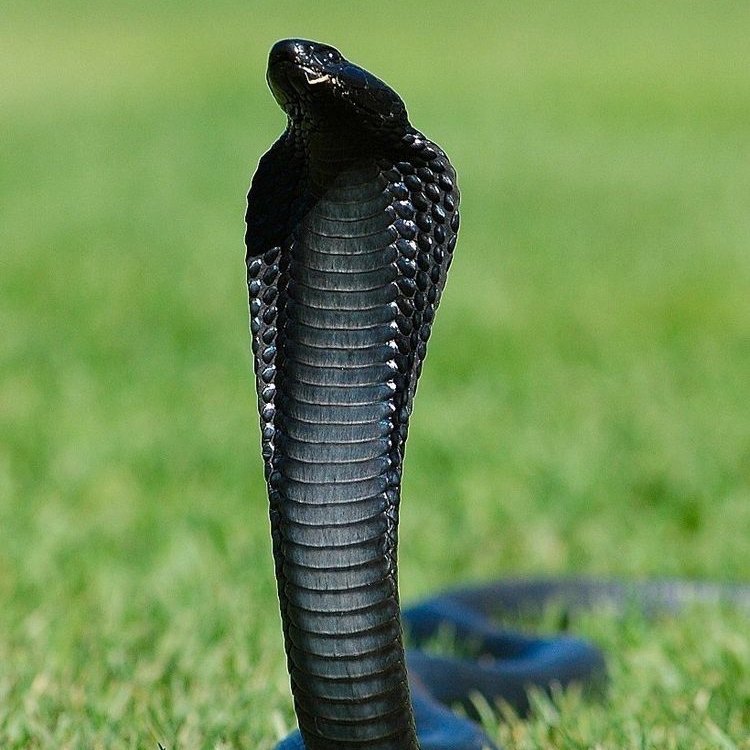
King Cobra: The Majestic Serpent of Southeast Asia
Disclaimer: The content provided is for informational purposes only. We cannot guarantee the accuracy of the information on this page 100%. All information provided here may change without prior notice.

